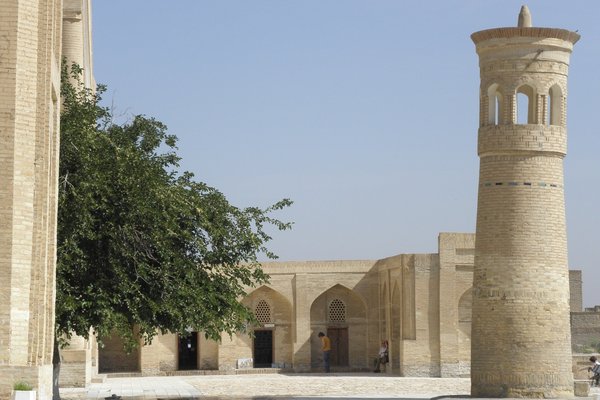Tajikistan, Turkmenistan, Uzbekistan
Silk Roads: Zarafshan-Karakum Corridor
The Silk Roads: Zarafshan-Karakum Corridor comprises a key section in the harsh environment of Central Asia of this route where ideas and goods were exchanged.
This 866-kilometre stretch, crossing mountain ranges and the Karakum desert, lies at the heart of the network of Silk Roads corridors. In early medieval times, it was the place where the trade of Sogdians flourished. Later, caravanserais and monumental Islamic buildings were added. The roads crossed the Karakum Desert to end in Merv Oasis, and comprise 34 individual components spread across high mountains, plains, and deserts.
Community Perspective: In Uzbekistan, Nan visited a string of sites, Jarek did Paykent and Els covered Chor Bakr and the Bahoutdin Complex near Bukhara. Tamas ventured into Tajikistan to cover Penjikent.
Site Info
Official Information
- Full Name
- Silk Roads: Zarafshan-Karakum Corridor (ID: 1675)
- Countries
- Tajikistan Turkmenistan Uzbekistan
- Status
-
Inscribed 2023
Site history
History of Silk Roads: Zarafshan-Karakum Corridor
- 2023: Inscribed
- Inscribed
- Type
- Cultural
- Criteria
- ii
- iii
- v
Links
- UNESCO
- whc.unesco.org
All Links
UNESCO.org
- whc.unesco.org — whc.unesco.org/
Community Information
- Community Category
- Human activity: Transport and Trade
Travel Information
Serial Transnational Sites
Samarkand Hotspot
Recent Connections
-
Perfect Inscriptions
2023 -
Samarkand Hotspot
Kafir Kala on the outsirts of Samarkand… -
Derived from more than one TWHS
Bahoutdin Architectural Complex 18/01/2…
Connections of Silk Roads: Zarafshan-Karakum Corridor
- Geography
- History
- World Heritage Process
-
-
Serial Transnational Sites
Tajikistan, Turkmenistan, Uzbekistan -
2 or more nominated criteria rejected by AB
4 and 6 were rejected -
Perfect Inscriptions
2023 -
Already inscribed still on T List
A number of the Uzbek and Tajik locations also feature in the TWHS Silk Road Sites in Uzbekistan / Tajikistan and as separate TWHS. -
Derived from more than one TWHS
Bahoutdin Architectural Complex 18/01/2008 Chashma-Ayub Mausoleum 18/01/2008 Chor-Bakr 18/01/2008 Minaret in Vobkent 18/01/2008 Mir-Sayid Bakhrom Mausoleum 18/01/2008 Rabati Malik Caravanserai 18/01/2008 Varakhsha 18/01/2008 Mausoleum of "Mukhammad Bashoro" 09/11/1999 The Site of Ancient Town of Pyanjekent 09/11/1999
-
- Religion and Belief
-
-
Notable mosques
Deggaron Mosque
-
- Human Activity
-
-
Cultural Routes
-
Irrigation and drainage
Toksankoriz Irrigation System
-
- Constructions
-
-
Necropolises
Chor Bakr Necropolis -
Caravanserai
Rabati Malik Caravanserai, Mansaf Caravanserai, Konegala Caravanserai, Akja Gala Caravanserai, Gyzylja Gala Caravanserai -
Notable minarets
Vobkent Minaret -
Mausolea
Mir Sayid Bakhrom Mausoleum
-
- Timeline
-
-
Built in the 2nd century BC
"Channelling much of the east-west exchange along the Silk Roads over the whole period from the 2nd century BCE to the 16th century CE" (brief description state party)
-
- WHS Hotspots
-
-
Samarkand Hotspot
Kafir Kala on the outsirts of Samarkand, Penjikent or Jartepa together on the day trip to Sarazm
-
News
No news.
Recent Visitors
Visitors of Silk Roads: Zarafshan-Karakum Corridor
- Afshin Iranpour
- Alberto Rodriguez Gutierrez
- Alejandro Lau
- Alexander Barabanov
- Alexander Lehmann
- Alexander Parsons
- Alikander99
- AmyAbroad
- Ana
- Argo
- Artur Anuszewski
- Ask Gudmundsen
- Aspasia
- Atila Ege
- Bin
- Bram de Bruin
- Carlos Sotelo
- Cheryl
- chiuliqi
- Clyde
- CynthiaSam
- czesioszpachelka
- Danieljbromberg
- David Marton
- del
- DL
- Dorejd
- Dr. Caligari
- Els Slots
- Erik Jelinek
- Evgenii
- Fan Yibo
- Frederik Dawson
- George Gdanski
- giloudepuertorico
- Grzegorz Andruszkiewicz
- Hammeel
- H Beswick
- henryjiao18
- Ivan Rucek
- Janos
- Jarek Pokrzywnicki
- Jawnbeary
- Jean Lecaillon
- JobStopar
- JoshHad
- Ken DJ
- Kevin McFarland
- Kevin Padley-Knight
- kiank37
- Knut
- La Concy
- Lado Joel
- Loic Pedras
- Lucio
- Luke LOU
- Maciej Gil
- Marcobrey
- Martin
- Michael Turtle
- Mihai Dascalu
- Mikko
- Miloš Tašković
- nan
- Nihal Ege
- Paul Schofield
- Philipp Leu
- Pieter Dijkshoorn
- Piotr Wasil
- Reza
- Rick Ohm
- rivr
- Roman Bruehwiler
- Sergio Arjona
- Stanimir
- Stanislaw Warwas
- SymonMajewski
- Szucs Tamas
- Tarquinio_Superbo
- Tatiana Nikulnikova
- Thomas Buechler
- Tinamu
- Toxicologist
- Velvetlapis
- voyager
- Walter
- Westwards
- Xiquinho Silva
- Zoë Sheng
- Zos M
Community Reviews
Show full reviewsThomas Buechler
Silk Roads: Zarafshan-Karakum Corridor
Silk Roads: Zarafshan-Karakum Corridor (Inscribed)
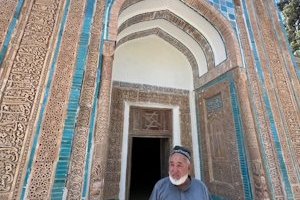
The Mausoleum of Mukhammad Bashoro is almost a thousand years old (built 11/12th century). It is a building that combines the function of a mausoleum and a mosque. The central cupola hall has extensions on both sides. The most outstanding feature of the Mausoleum is the arched portal or peshtak with glazed tiles, carved terracotta and brick stones. Since it has undergone very little renovation, the Mausoleum is one of the most authentic religious buildings along this part of the Silk Road. It is located along the Panjakent-Duschanbe highway, with a 10km detour to the village of Mazor. You need your own vehicle.
Keep reading 0 commentsSzucs Tamas
Silk Roads: Zarafshan-Karakum Corridor
Silk Roads: Zarafshan-Karakum Corridor (Inscribed)
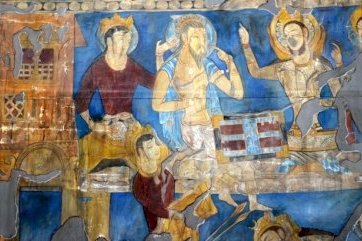
Ths is a real ragtag nomination - with sites from different periods and different styles - loosely connected by the relatively vague concept of Silk Road. However, some of them are quite spectacular - so they deserve a good mark. Previous reviewers covered the sites near Bukhara. If you want to tick the site off, they are the most accessible - any taxi driver in Bukhara will take you there for some tens of thousands of UZS.
So I focus on the less visited Tajik section. Penjikent (or Panjakent) is easily accessible now from Samarkand. Most EU citizens do not need a visa to enter the country, and the Jarteppa border is served by marshrutkas (50 000 UZS per person cca one hour from the city centre). The border procedures are fast and straightforward, the only difficulty is, that you have to walk from the Uzbek side to the Tajik border post. After the formalities shared taxis wait on the Tajik side of the border. A whole car - maximum 4 persons - costs 80 TJS, but is you want to stop at Sarazm WHS, you are supposed to pay cca 160.
Penjikent is a sleepy provincial Tajik town with minimal amenities - there is the farmers market in the center, where you can buy fresh produce, eat a kebab, and there are some basic hotels (we were staying in Hotel Sugd, I can recommend it). The WHS is somewhat away from the modern town on the mountain …
Keep reading 0 commentsnan
Silk Roads: Zarafshan-Karakum Corridor by Nan
Silk Roads: Zarafshan-Karakum Corridor (Inscribed)
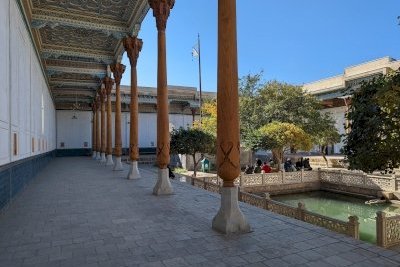
For 1.500 years, the silk roads played a major role in exchanging goods and knowledge between Europe and Eastern Asia. A key area was Central Asia which linked the various Chinese empires with multiple Persian empires over the centuries.
The region itself consists mostly of deserts, intercut by rivers from the mountains, most notably the Zeravshan, the Amu Darya (Greek Oxus) and the Sir Darya. Indeed, the proposed sites follow the green corridor along the Zeravsahn in Uzbekistan from Samarkand to Bukhara from where it continues into Turkmenistan.
As a half day trip from Bukhara, I visited the Vobkent Minaret, the Chasma-iAyub mausoleum in Khazira and the Bahouddin Architectural Complex. Bahouddin Architectural Complex is a true gem, showing strong Chinese influences. Vobkent Minaret and Chasma-iAyub Khazira are short 5min visits each. One is a minaret, the other a facade of a mausoleum with a swastika symbol.
Small word on advice re Chasma-iAyub: There are at least 3 sites named accordingly, one in Bukhara. Spelling varied, but I think the location on our map is correct.
The next day, I continued from Bukhara via Sharisabz to Samarkand. When approaching Samarkand, we stopped Kafirkala on the cities' outskirts. The site is not signposted at all and hard to make sense of. I think you would need a guide, but I managed to see parts of the fortification.
My last stop on the Silk Roads happened on return from Tajikistan (Sarazm), I took a minibus from the border …
Keep reading 0 commentsJarek Pokrzywnicki
Silk Roads: Zarafshan-Karakum Corridor
Silk Roads: Zarafshan-Karakum Corridor (Inscribed)
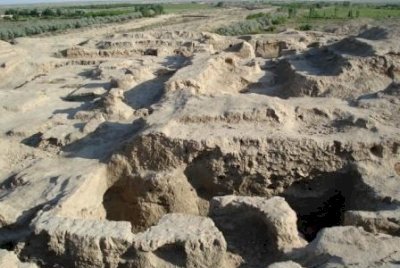
Site visited in April, 2010. It is still on the Tentative list as a separate site but also as a group of monuments to be included as Uzbekistan part of Silk Road. Maybe it is a good idea although it will contain a lot of monuments from different period of times. Paykent is Sogdian trading place of Silk Road where the paths from Europe (Black Sea through Khorezm) to Fergana Valley and China (Kashgar) as well as to the south: Iran (Khorasan) and India were met. Developed in early medieval period (VI-X centuries), repeatedly conquered, destroyed and rebuilt finally abandoned in XVI century. What is left are modest remnants of a former citadel (the highest part of ruins), town walls (hardly visible) and dwelling houses most of that uncovered by archeologists. The whole area is unfenced and looked completely unprotected. Thanks to building material (mostly adobe) it is similar to any other archeological monuments in Central Asia. In addition to early medieval ruins there is a descent museum with main excavation findings – red building located some 500 meters from the site - Muzeum of Ancient Paykend History (Qadimgi Paykend Tarixi Muzeyi). Paykent is located some 50 km from Buchara south west of the town, between Yangimazar and Qorakol, take M37 towards the border with Turkmenistan. The site will be on the left side of the road. There were no marks of the place on the main road, nor in the places nearby. I took a taxi from Buchara centre …
Keep reading 0 comments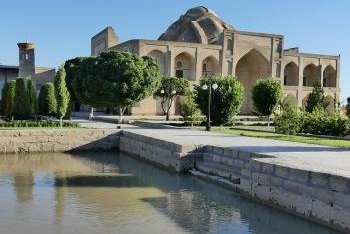
I visited this tentative WHS in June 2017. Uzbekistan was very crafty with this tentative site. They left the very obvious Samarkand, Bukhara and Khiva out of the Silk Roads Sites (no double listing), but then they included all the separate tentative sites put forward in 2008! A sort of fallback position, seeking a series if individual inscription fails!
Of the list I visited the ones near Bukhara: Chasma Ayub Mausoleum and Chor Bakr Necropolis (already reviewed) + Bahoutdin Naqshband Necropolis (photo). I think it would be interesting and useful to have all these sites + other sites in Asia work together to have 1 transnational inscription for all these sites instead of having one series for every country.
Keep reading 0 comments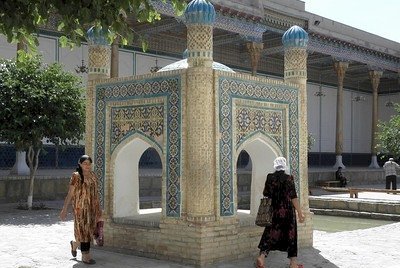
Uzbekistan has selected 18 locations to be part of the international Silk Road nomination. They include archaeological sites of trade centers, buddhist temples, a citadel, a caravanserai, stupa's, mausolea, minarets and medressahs all over Uzbekistan. They do not double the current Uzbek WHS of Samarkand, Bukhara and Khiva by the way (though all of Silk Road fame).
On my recent trip to Uzbekistan, I visited 2 sites out of these 18: Chor-Bakr and the Bahoutdin Complex. Both are located a few km's outside of Bukhara.
Chor-Bakr is a 16th century necropolis, containing the family tombs of Abu-Bakr-Said (related to the Prophet Muhammad). From the 19th century on the site was developed further by adding a mosque, a khonaqo and a pretty little minaret. At my arrival at 9.30 I found the place deserted, except for a couple of parading peacocks. The complex anno 2010 has come a long way from this quote from my 1996 LP Central Asia ".. there's little sign of recent restoration". Chor-Bakr now looks as polished as all monuments in Bukhara. They even already have a Unesco sign! It is definitely a worthwhile site to visit though, very large, intact (or restored to look like that).
The Bahoutdin Complex is a much more lively site. This is an important Sufi shrine that attracts lots of locals. It houses the tomb of Bahoutdin Naqshaband, the 14th century founder of one of Central Asia's most influential Sufi orders. The complex around the marble tomb of …
Keep reading 0 comments
